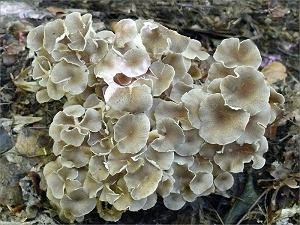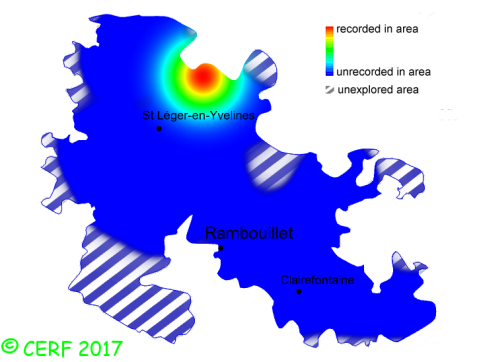| Dendropolyporus umbellatus (Pers.) Jülich |
|
|
|
|
|
|
The fruiting body is a shrub of umbrella-shaped caps (1 to 6 cm wide), connected together by a thick central stem, red-brown, branched like a cauliflower, each branchlet ending with small umbrella-like grey to tawny-brown slightly depressed caps with a wavy margin. The flesh is white, soft; its taste is pleasant to very slightly acrid; the odour is mild, or mealy. The fertile surface is made of pores, under the caps. The spore print is white.It grows on wood or on the ground, in broad-leaved forests, on buried roots of stumps or weakened trees, on a rather calcareous soil, mostly with oaks, also with beech, hornbeam, maple trees. The fruiting period takes place from June to December.
Distinctive features : numerous grey-brown to ochraceous caps, umbrella-shaped and wavy, whose stems emerge from a thick branching trunk; short tubes, thin pored; close to deciduous trees Dendropolyporus umbellatus is rare and confined in the forest of Rambouillet, and is quite rare, more generally speaking . | ||
|
page updated on 14/01/18

